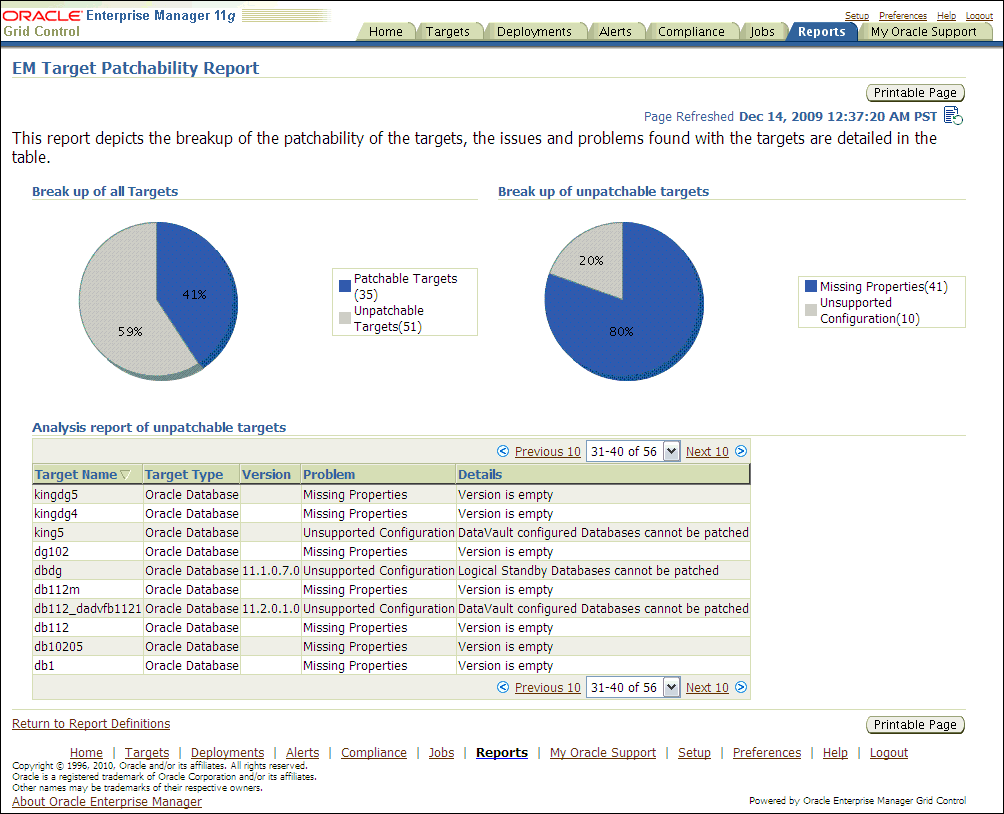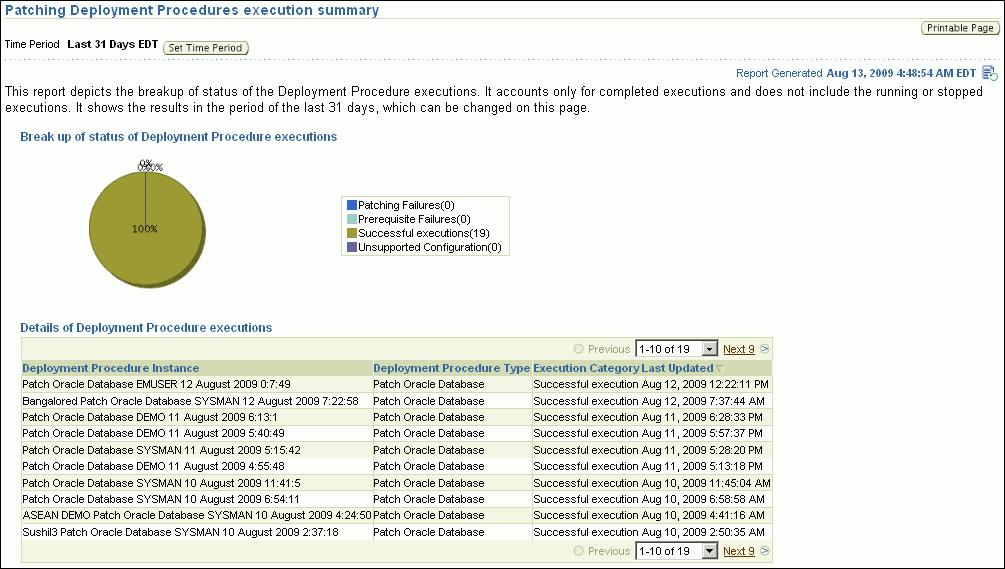| Oracle® Enterprise Manager Administrator's Guide for Software and Server Provisioning and Patching 11g Release 1 (11.1.0.1.0) Part Number E16599-03 |
|
|
PDF · Mobi · ePub |
| Oracle® Enterprise Manager Administrator's Guide for Software and Server Provisioning and Patching 11g Release 1 (11.1.0.1.0) Part Number E16599-03 |
|
|
PDF · Mobi · ePub |
This appendix describes the patching automation reports offered by Enterprise Manager Grid Control. In particular, this appendix covers the following:
The Patchability Report helps you analyze the environment and identify the Oracle Databases, or Application Servers, or Oracle Clusterware targets that are suitable and not suitable for a patching operation. Before running a patching Deployment Procedure for Oracle Database and Oracle RAC, Oracle strongly recommends you to run this report so that you know whether the database targets you want to patch can be patched successfully. You can diagnose whether the database target is not suitable for patching due to missing properties or unsupported configuration.
To access the Patchability Report, in Grid Control, click Reports. On the Report Definitions page, in the table, expand Deployment and Configuration, and then expand Patching Automation Reports and click EM Target Patchability Report.

Note:
For information about missing property errors, see Workarounds for Missing Property Errors. For information about unsupported configuration errors, see Workarounds for Unsupported Configuration Errors.Table H-1 describes the possible missing property errors and the workarounds you can try to resolve them.
Table H-1 Missing Properties Error and Workarounds
| Problem | Workaround |
|---|---|
|
Empty target propertyversion |
The target is not properly configured or maybe the target is unavailable. Reconfigure the target or check for metric collection errors . |
|
Inadequate or incomplete target information collected by Oracle Management Agent. |
To resolve this issue, recompute the dynamic properties and refresh the host configuration so that Oracle Management Repository is updated with the latest configuration of the host. To do so, follow these steps:
|
Table H-2 describes the possible unsupported configuration errors and the workarounds you can try to resolve them.
Table H-2 Workarounds for Unsupported Configuration Errors
| Problem | Workarounds |
|---|---|
|
RAC Instance does not have an associated RAC Database |
Rediscover the RAC target and add the RAC instance to the RAC database. |
|
The database is not mediated by the OMS |
The target discovery is not appropriate. Remove the target from Grid Control, and rediscover on all the Management Agents in the cluster. |
The Patching Deployment Procedure Execution Summary Report helps you analyze the results of the patching Deployment Procedures that were run over a period of time in the past. The report helps you understand the number of patching failures, prerequisite failures, successful executions, and unsupported configurations encountered by the Deployment Procedures.
To access the Patching Deployment Procedure Execution Summary Report, in Grid Control, click Reports. On the Report Definitions page, in the table, expand Deployment and Configuration, and then expand Patching Automation Reports and click Patching Deployment Procedures Execution Summary.
